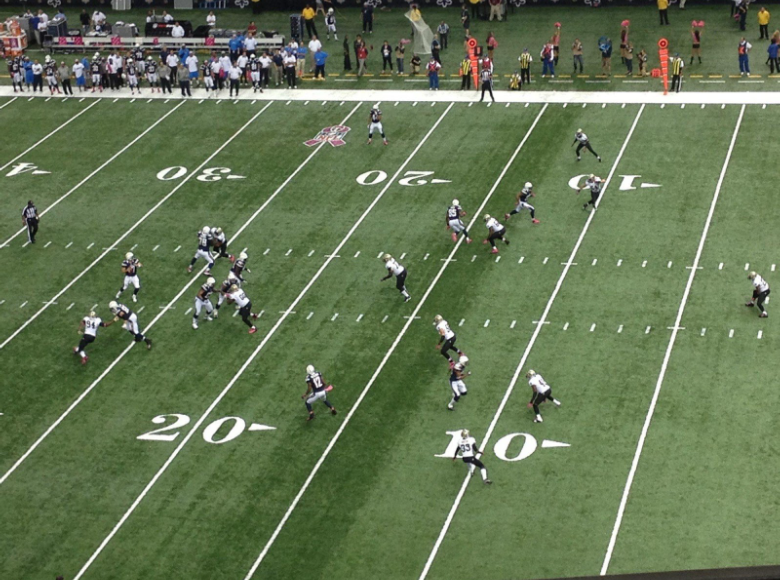A Beginner’s Guide to Email Marketing Agency for Ecommerce
Have you ever wondered about all the different types of sports there are and all the different ways the fields for each sport can differ? If you love sports, you’ve likely at least considered this at some point. But, you may not have dug into the specifics – like soccer field vs football field dimensions.
Don’t worry; we’re here to help! You may have already been told the obvious differences between a soccer field and a football size. But there are a few things you probably didn’t know.
Read on to get the scoop on how football field dimensions differ from a soccer field.
Understanding the Basics
When analyzing the differences between a soccer field and a football field, it’s essential to start with the basics. These two sports, adored by millions around the globe, have distinctly different playing fields. The shape, size, and layout of these fields play a crucial role in how the respective games unfold.
The field for soccer, known as a football pitch in many parts of the world, is a rectangular area with specific markings. On the other hand, the football field, primarily used in American and Canadian football, is also a rectangle but has a unique set of markings and dimensions.
However, the discrepancies run much deeper than just the shape and size. The layout, markings, and boundary regulations are also remarkably different in these fields, significantly impacting the game’s dynamics and strategies.
Delving Into Soccer Field Dimensions
In the world of soccer, the dimensions of the field can vary within the limits set by the sport’s governing body – FIFA. The field’s length, known as the touchline, should be between 100 meters (110 yards) and 110 meters (120 yards). The width, known as the goal line, should be between 64 meters (70 yards) and 75 meters (80 yards).
This substantial range in size allows for a variation in gameplay. Smaller fields lead to faster-paced games due to less ground to cover, while larger fields can make the games more physically demanding.
Exploring American Football Field Dimensions
Unlike soccer, the American football field’s dimensions are standardized. The field measures 120 yards in length and 53.3 yards in width, incorporating both the playing field and the end zones. Each end zone is 10 yards deep, making the playing area 100 yards long.
This lack of size variation leads to a more uniform playing experience across different grounds. The players and coaches can develop strategies and play without considering variations in the playing area’s size.
The actual playing area, however, is further divided into segments of 1 yard, marked by parallel lines running across the field’s width. These markings play a key role in the game, determining the team’s progress toward the opponent’s end zone.
Goal Posts: Soccer vs Football
Another striking difference between a soccer field and a football field dimension lies in the goalposts. In soccer, the goal is placed in the middle of the goal line. It’s 7.320m wide and 2.44m high, and the entire ball needs to cross between the posts and under the crossbar to score a goal.
In comparison, football goalposts are located at the back of the end zone. They are significantly narrower, just 18.5 feet, and the crossbar is higher, at 10 feet. Furthermore, in football, the ball must go over the crossbar between the posts for a successful field goal or extra point.
The Field Markings
When you look at a soccer field’s dimensions, you’ll find it divided into two halves. Each half contains a goal, a penalty area, and a center circle.
The center circle is where the game starts or resumes after a goal. The penalty area is where the goalkeeper can use his hands, and penalties are awarded.
The football field, however, is a whole different ball game. The field is divided into segments of 1 yard each and numbered every ten yards from the goal line to the middle of the field. The markings help determine the team’s progress and become crucial during the game’s high-stakes moments.
The Boundaries
If the ball bounces off the lines, the game goes on as long as it doesn’t fully cross them. This makes for a dynamic and smooth gameplay experience where the action never stops.
However, in football, the sidelines and end lines are not part of the field. The game stops if the ball touches or crosses these lines, and some rules say how to start the game again.
This difference shows how different the two games are. Because soccer is played all the time, players have to be able to quickly adjust to how the game is going. It makes people more creative, open to improvising, and always on the move on the field.
Football, on the other hand, is more organized, with regular stops and starts that give teams time to plan and execute precise plays. In football, the breaks allow coaches to talk to their players and change how they are playing.
Each sport has its charm and appeal, but the different ways that the boundary lines are drawn show how soccer and football are played and how their strategies are different.
The Playing Surface
In the past, grass fields were used for both soccer and football. However, as technology has improved, artificial turf has become more common, especially in football. FIFA lets soccer fields have fake grass, but it’s not used or accepted as much as in football.
The type of surface can have a big effect on the game. Natural grass is softer, so it’s less likely to hurt you, but it needs more upkeep. The harder surface of artificial turf, on the other hand, can make injuries more likely. It is more durable and easier to keep up.
Strategies and Gameplay in Soccer
Soccer is a game of skill, strategy, and quickness. Every move on the field is planned and based on how the other team plays and the team’s strategy. The most common formations for teams are a 4-3-3, 4-4-2, or 3-5-2, but this can change a lot depending on the coach’s plan and the players they have available.
A strong defense is possible with four defenders, a balanced midfield with three midfielders, and a strong attack with three forwards in the 4-3-3 formation. When it comes to both defense and offense, this formation is known for being flexible and balanced.
A 4-4-2 formation, on the other hand, focuses on a strong defense and midfield, with two forwards in charge of scoring goals. This formation helps the team keep control of the middle of the field, which usually means they have better ball control.
Finally, there are three defenders, five midfielders, and two forwards in a 3-5-2 formation. This formation makes the midfield stronger by putting more players there. This makes it easier to control the pace of the game while also putting pressure on the other team’s defense.
But in soccer, strategy is more than just formations. A team’s tactical approach includes where to put players, how to pass, how to execute set pieces, and how to use space on the field. Understanding these parts of the game can help you appreciate how complicated soccer is a lot more.
Dimers NFL Futures offers insights into the world of the NFL, providing comprehensive information about the game’s strategies, betting odds, and more. It’s a must-visit platform for any passionate football fan.
Strategies and Gameplay in Football
American football is a game with a lot of complicated strategies and moves. When a team is on offense, defense, or special teams, the strategy can be very different. Teams often have different coaches for each part of the game because of this.
Teams usually have a set number of “downs,” or chances to move the ball 10 yards forward when they are on offense. In football, different formations are used, like the “I-Formation” for running plays and the “Shotgun” formation for passing plays. Another popular choice is the “Spread” formation, which is meant to make the defense less solid and give runners room.
On the other hand, defensive strategies try to stop the other team from moving the ball and scoring. Different defensive formations, such as the “4-3 Defense” with four linebackers and three linemen or the “Nickel Defense” with five defensive backs, are often used depending on how the offense plays.
The “special teams” unit is also in charge of plays that involve kicking the ball. Kickoffs, field goals, punts, and extra points are some of these plays. Football is a multidimensional game that requires both physical and mental skills because each area has its own set of strategies.
Soccer Field vs Football Field Dimensions Must Know
While soccer and football share many similarities, soccer field vs football field dimensions play a crucial role in differentiating the two sports. The size and design of the field affect the gameplay, strategies, and overall experience for players and spectators.
Understanding these differences can enhance our appreciation for both sports. Now, grab a ball and head out to the field of your choice to experience the excitement for yourself!
Did you like this guide? Great! Please browse our website for more!












